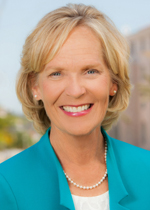InTouch – Stepping Up Our Fight Against Homelessness
/ Many of you started your day last Friday a few hours before dawn, joining the annual Point-in-Time Count of homeless people. Thank you to everyone who took part.
Many of you started your day last Friday a few hours before dawn, joining the annual Point-in-Time Count of homeless people. Thank you to everyone who took part.
That tally helps determine amounts of federal funding our region receives to address homelessness. So know that dragging yourself out of bed one morning leads directly to finding beds for those who need them.
This is the fourth year the County has thrown its weight behind the count. And it’s just one of the ways in recent years that we’ve expanded our role in tackling the challenge of homelessness. It’s a role you’ll see continue to grow. I want to share a bit more about what we’ve been doing and where we’re going from here.
First of all, homelessness is an extremely complex issue. Each person without a home is an individual, as unique as you and I. Unique in background, circumstances and needs. Progress is going to take a multi-pronged approach and collaboration across our entire region. The County is playing a significant part, but we’re working with multiple partners: cities, housing agencies, service providers, hospitals and more. There may be no greater example of where we’ll need to harness the power of collective impact.
It was just over a year ago we and a group of partners announced the launch of Project One for All. The program focuses on homeless people with serious mental illness. This is an area where the County is going to have a stronger presence because of our role in mental health service delivery.
Many of the homeless people coping with mental illness are distrustful of service providers, and that just adds to the difficulty of getting them into housing. Since the housing component of Project One for All began in July, we’ve gotten more than 200 people into bridge or permanent housing. That’s coupled with comprehensive services meant to get them eventually taking care of themselves. The project’s goal is to extend that to 1,250 people.
The housing is made possible in part through Section 8 vouchers, which are handled by our Department of Housing and Community Development Services. That connection between mental health and housing is what led us to move HCDS into the Health and Human Services Agency, making it easier to work more closely with Behavioral Health Services.
Having those departments work together is a natural combination, but our efforts on homelessness cross department lines in ways you may not expect. We’re providing outreach training to members of departments like Public Works, Library and Parks. They all have staff who could encounter homeless people in the course of their work. Those employees learn how to approach them and refer them to County-funded mental health resources. That someone who inspects storm drains is now involved in outreach speaks to our all-hands-on-deck strategy. We’re bringing that training not just to our own employees, but to staff for other agencies in the region.
We continue to strengthen the collaboration with our public safety departments, because a significant number of people in the justice system struggle with mental illness. Treatment is part of the wraparound services we bring to probationers to make sure they neither reoffend nor wind up on the street.
We’re also giving extra attention to one specific set of people: homeless Medi-Cal recipients with serious mental illness, substance addiction or chronic health conditions whom we’ve identified as repeatedly winding up in emergency rooms. An enormous amount of resources gets devoted to this relatively small number of people. In response, we’re developing an effort called Whole Person Wellness, which puts an intensive focus on these individuals, getting them connected to the network of resources they need. Addressing the root causes of these recurring crises will be better for the person in the long run – and more cost-effective.
While helping homeless people with mental illness is our main area of concern, we’re exploring ways we can leverage our resources to help additional sub-groups of homeless people, like veterans, seniors, families with children.
The region has moved to the “housing first” model, but among the challenges of that approach is the availability of housing in San Diego. Last year we offered up $400,000 in incentives to landlords who will rent to homeless veterans. Under Project One for All, over $1.5 million will be used to involve landlords in solutions, including financial incentives.
Looking ahead, the state is developing a program called No Place Like Home. We’ll get a share of $2 billion that will go toward permanent supportive housing. We’re working with the state now on the details and expect to see that funding arrive in about a year.
That’s a quick overview of a few of the recent, additional steps we’ve taken in grappling with this challenge. Like any large problem, we’re not going to see radical changes overnight. But we are in this for the long haul. We’ll continue to improve coordination with the other players in this effort, and we’ll be open-minded and flexible about trying innovative new tactics.
It all comes back, as with everything we do, to our vision of a healthy, safe and thriving region. We have a population that’s both right in our midst and disconnected from that vision in so many ways. We need to help build those connections, and as I’ve stressed before, make sure our vision reaches everyone who lives here.
Recent InTouch columns
Firm Values in a Season of Change